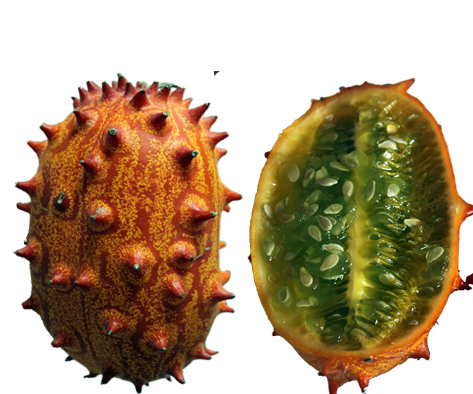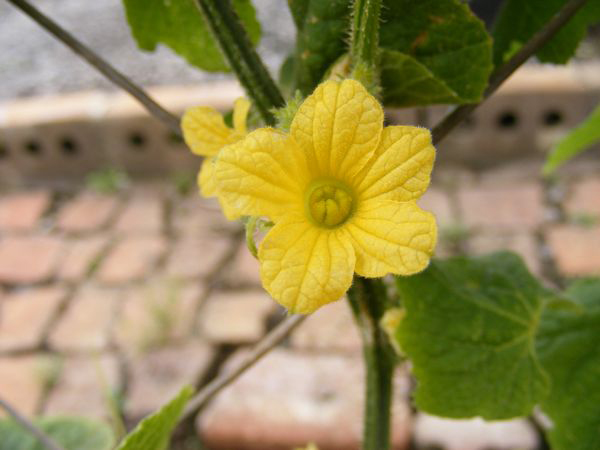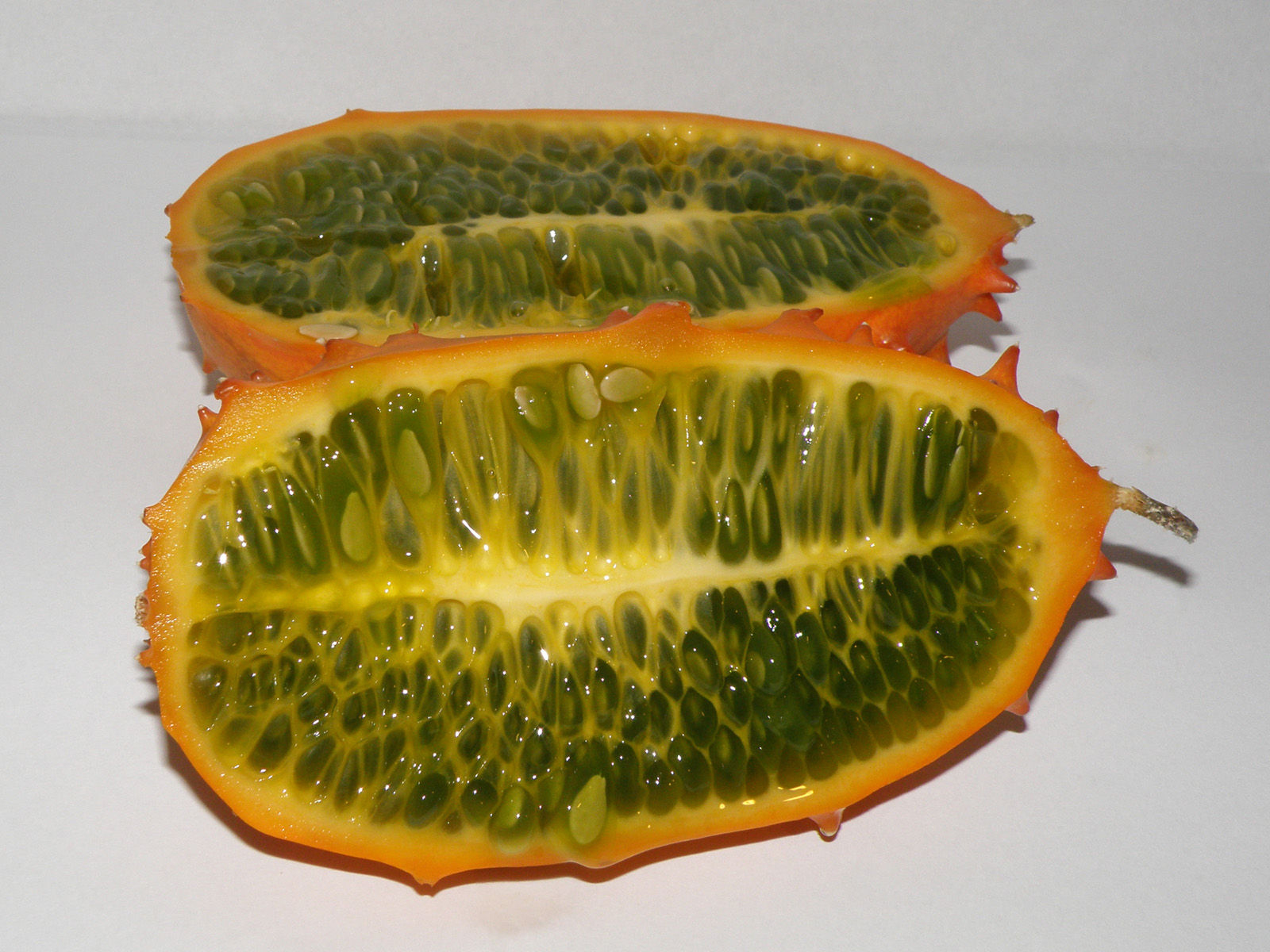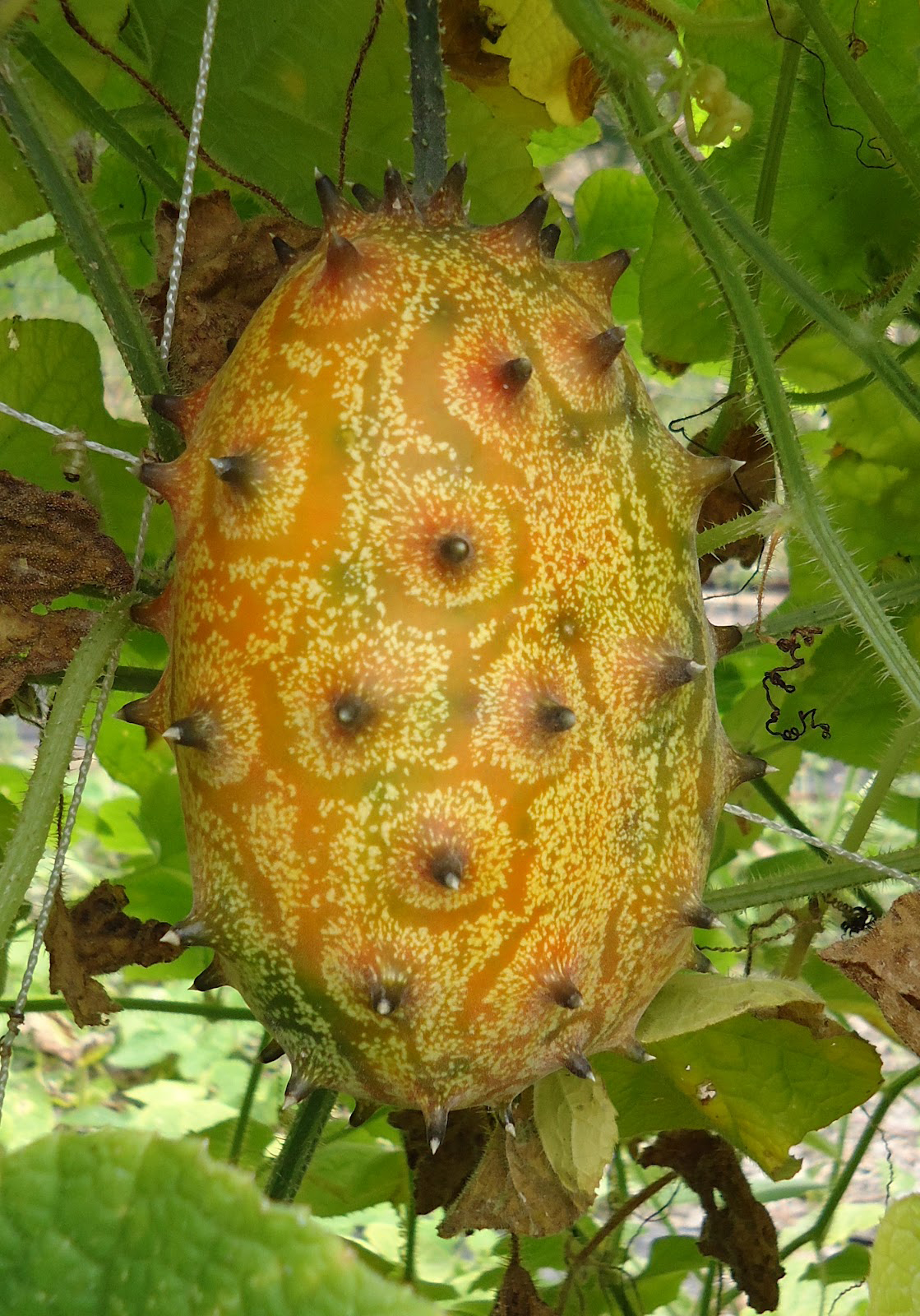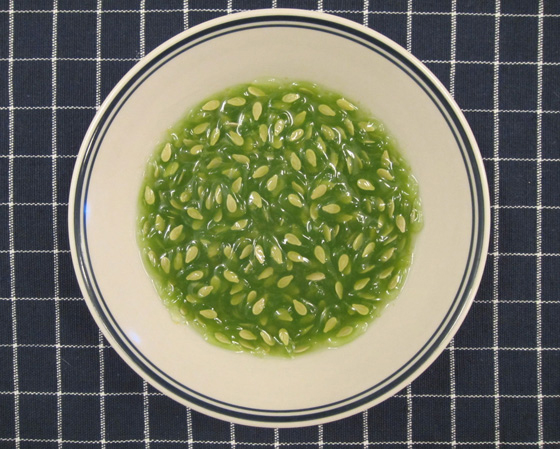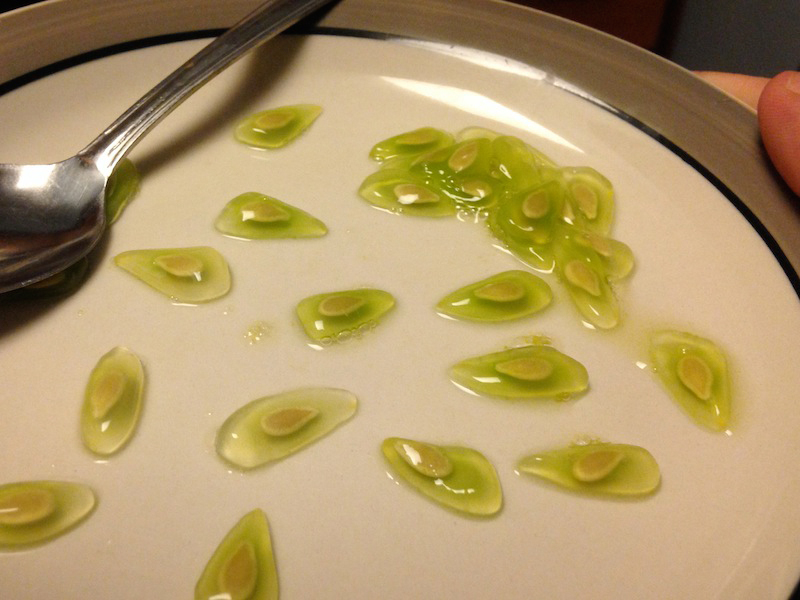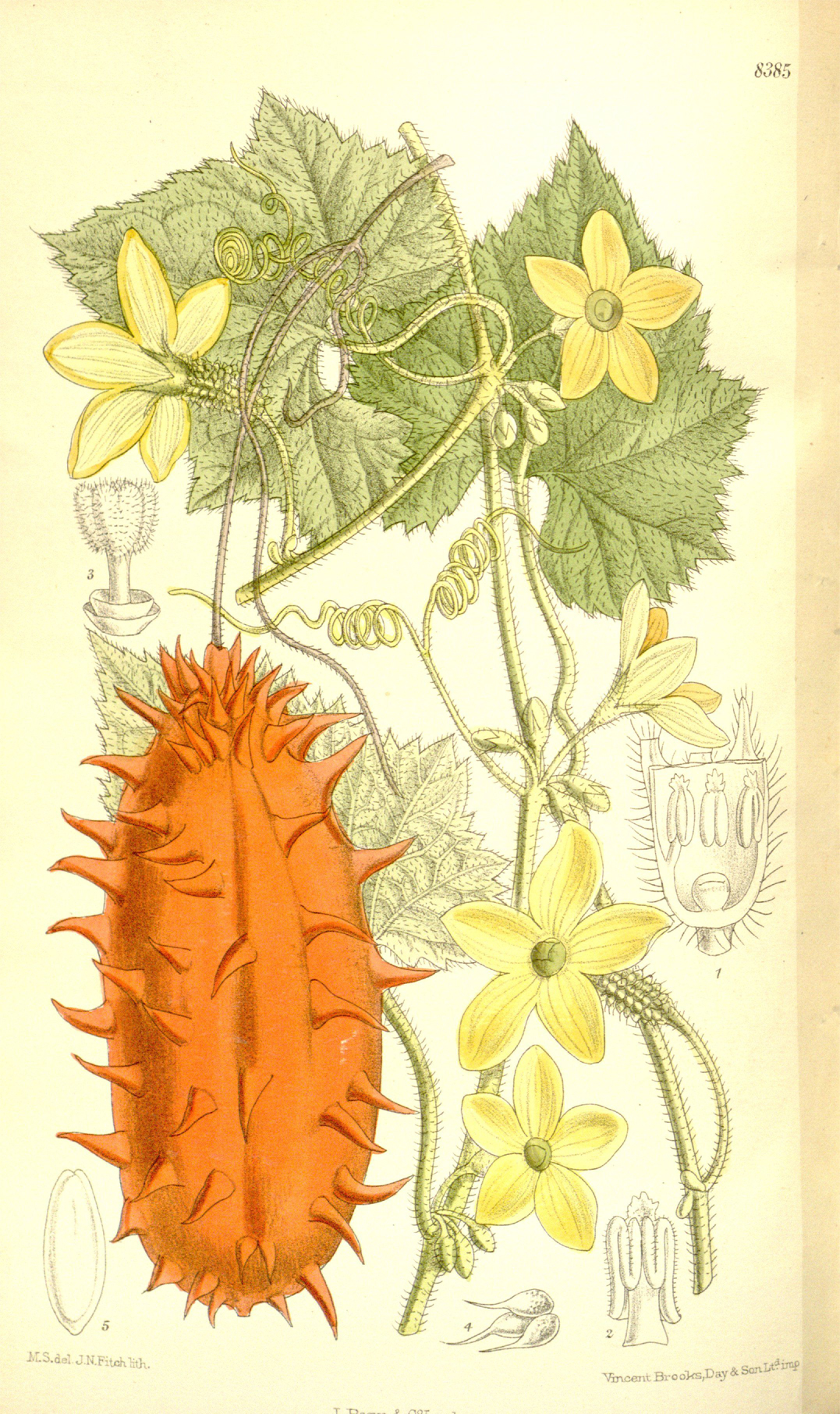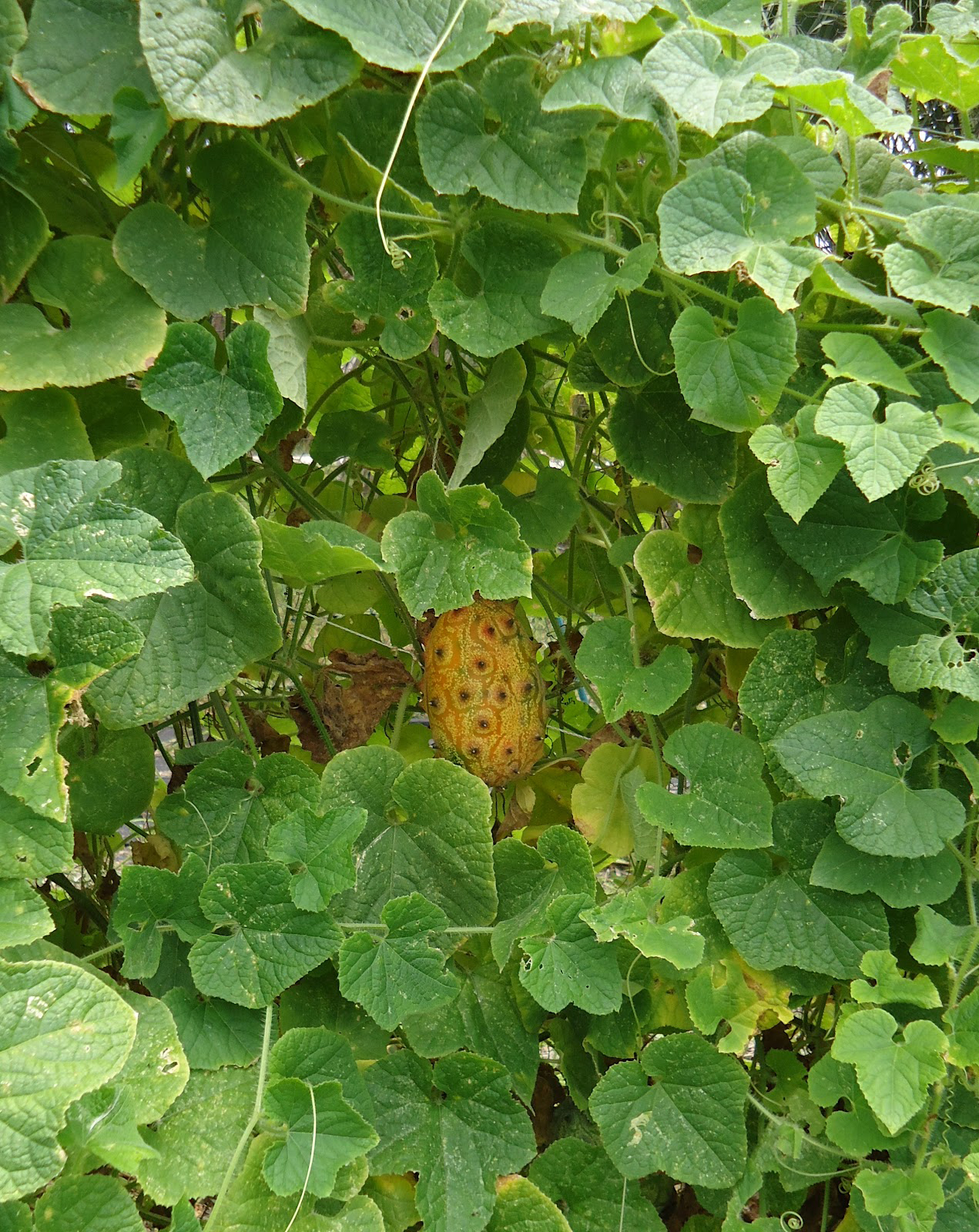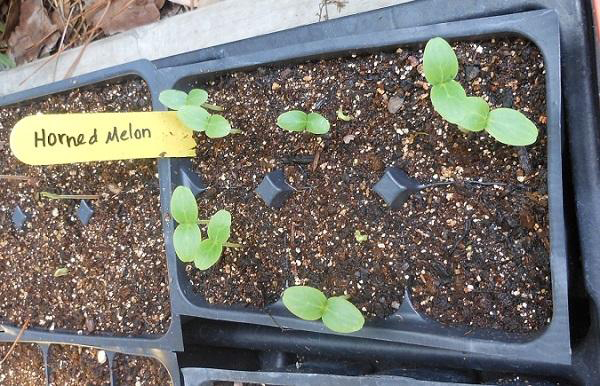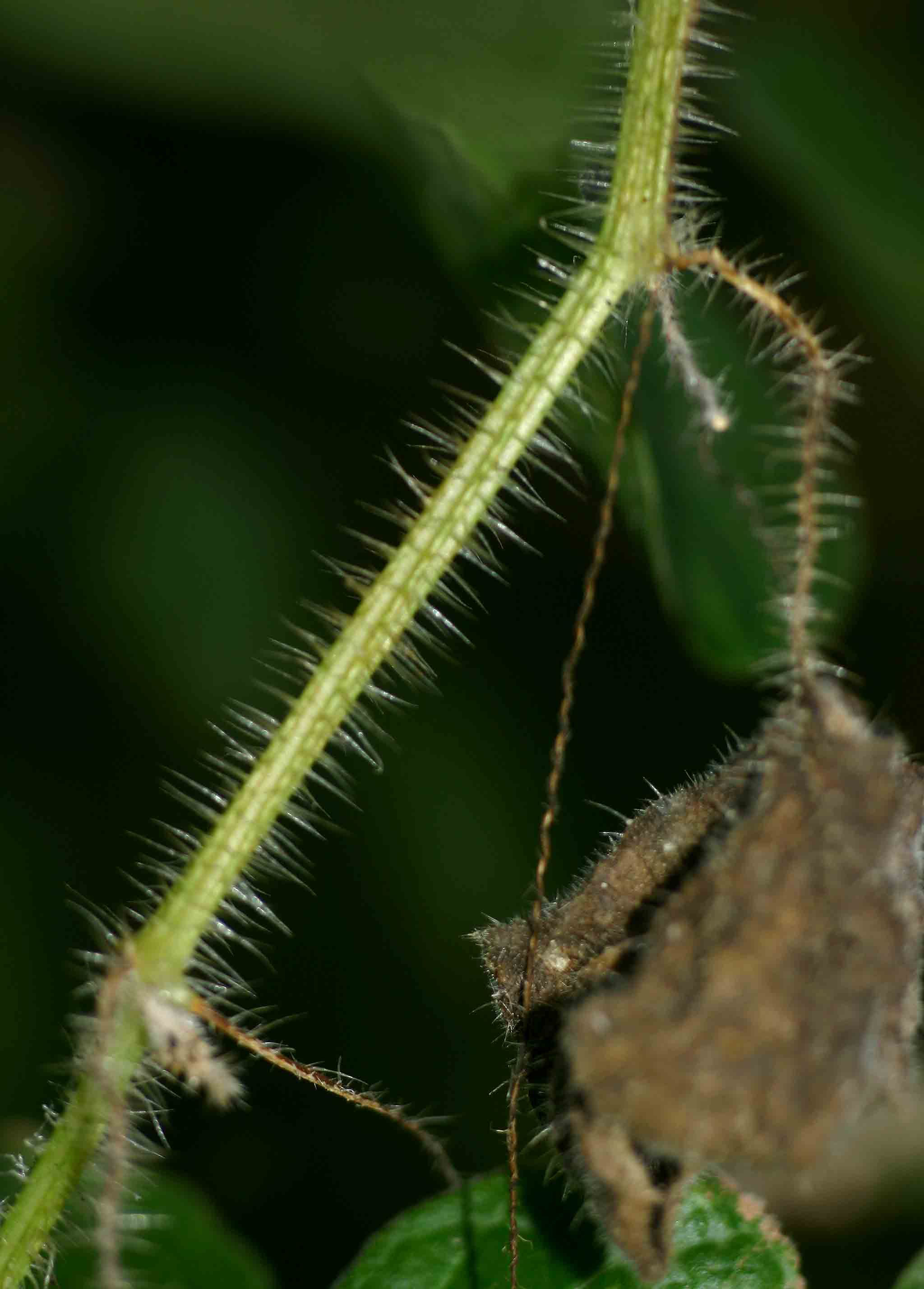Horned Melons are varying in size from 8 centimeters (3.2 in) to 10 centimeters (4 in) long & 4 -5 centimeters (1.5-2 in) in diameter. According to the research, the average weight of a Horned Melon is 209 grams. Horned melons are available during the summer. Horned melons are generally sweet and tart, although the taste has been compared to cucumber or combination of Cucumber and banana. One cup of Horned Melon 233 grams contains 103 kilo calories. According to USAD major nutrients contain in this fruit are Iron (32.88%), Magnesium (22.14%), Vitamin C (13.67%), Phosphorus (12.29%), and Vitamin B6 (11.31%).
Health benefits of horned melon
Ever since the World Health Organization recognized the principle nutritional illnesses that effect sib-Saharan Africa, studies have been performed to determine plants, just like the ones from the Cucurbitacceae botanical family, which could supply the required nutrition as well as micro nutrients so as to fight these types of inadequacies. Since the horned melon can be grown in dry regions and is particularly very nourishing, it will assist in improving malnutrition in Africa along with other parts of the developing world.
1. Contains numerous Antioxidants
A couple of the anti-oxidants recognized in horned melon seeds usually are a-tocopherol as well as y-tocopherol. Both of them are organic types of vitamin E. Vitamin E has several health advantages which includes healthy skin, heart, muscles, nerves, and red blood cells. Vitamin E likewise helps counteract harmful free-radicals that can induce long-term illnesses just like heart problems as well as cancer. Additionally there is several proof to point out that vitamin E may help decrease our chance of Alzheimer’s as well as Parkinson’s disease.
The yellowish-green colored pigment perfectly located at the seeds and also pulp of horned melon include the carotenoid, beta carotene, popularly known as vitamin A. Beta carotene assists strengthen the body’s defense mechanisms and sustain eye and skin health. It may also help cancer prevention simply by suppressing the grow of free-radicals. A diet abundant with vegetables and fruit which contain carotenoids just like beta carotone, lycopene and lutein may also assist repair as well as safeguard DNA, therefore decreasing the ageing procedure.
2. Beneficial for eye
A kiwano consists of 307 IU of vitamin A, or even 6 % of the 5,000 IU suggested every day. Vitamin A is a vital nutrient for the assistance of the retina function within the eye which retains eyesight. Vitamin A additionally fortifies the strength of the mucosal lining, the very first line of protection from infection within the nasal passages, throat and also intestinal tract.
3. Good food for metabolism
A kiwano offers 1 mg of zinc, or 7 % of the 15 mg required every day. On average, most Americans usually do not eat the minimal every day requirement of zinc, in accordance with Ohio State University. Which includes zinc sources within the diet is essential mainly because it plays a role in the development of protein, that repairs wounds and also produces blood cells. Zinc additionally takes part in the function along with discharge of insulin essential for normal carbohydrate metabolism.
4. Stops premature aging
A kiwano offers 11 mg of vitamin C, or 18 % of the FDA suggested Daily Value of 60 mg. Including concentrated sources of vitamin C within the diet is essential because the nutrient is required for the function of numerous body systems. Vitamin C is essential for the generation of collagen, an element of skin tissue utilized for making as well as repairing epidermal as well as organ tissues. Additionally, it safeguards cells from injury brought on by free-radicals and harmful toxins, waste by-products of metabolism, that may result in the growth and development of disease and result in untimely aging.
More about horned melon
These types of fruits are lower in calories, loaded with dietary fiber, vitamin A, vitamin C, calcium as well as iron. This fruit could be kept in room temperature for a minimum of 2 months. This is often a primary reason for utilizing these unusual looking fruits for ornamental purposes. However, this fruit is a somewhat new entrant to the majority of parts of the world. Although, you can get this fruit, they aren’t sure concerning how to consume it.
Horned Melons have little horns growing out from bright yellow skin along with some orange on it . They’re about Three to five inches lengthy (7.5 to 13 cm) and average 2 inches wide (5 cm.) They’ll weigh between 1 to 2 pounds (1/2 a kilo to a kilo.)
Inside, the flesh appears like lime-green jelly, and it has a rather grassy smell into it.This can be a challenging melon. Unless there’s two types floating around, then it seems that in consuming this melon two genetically various taste bud genes are rising in humans.
Several food writers state the seeds are delicious, and that the fantastic sweet and also sour taste is actually a complicated mixture of banana, cucumber, lime, mango, pineapple and watermelon tastes.
To others, the seeds are formally delicious, however they are as appealing since the tough, bitter as well as stringy seeds present in a cucumber which is past it. Also it might be that to individuals within this genetic camp, the taste is really complex that they can’t identify it: to those people, there isn’t any taste at all. Zip-dee-doo-dah flavour. These individuals appear to be in the same camp as most mammals, since most mammals will not even touch it.
History of horned melon
Introduced into New Zealand in 1930, the melon was first grown for ornamental reasons. New Zealanders named it “kiwano” simply because its flesh contains a little similarity to that of the kiwi fruit, that is titled after the countries national bird as well as which New Zealand has marketed along with great success for more than Eighty years. It absolutely was only lately made available in North American as well as European markets.
Selection, Storage & Handling:
Ripe Horned Melons have a vibrant orange shell. Prevent any kind of discoloration or even soft spots. You don’t need to refrigerate. The seeds are delicious. Kiwano Melon shells can be used distinctive servings bowls for soups, sorbets and also desserts.
Horned Melon Uses
Ripe African Horned Cucumbers are utilized for numerous delicious reasons utilizing their wonderful flavor and also taste:
- The green jelly-like flesh is scooped out of the spiny fruit shell and consumed together with a little sugar.
- They are occasionally sliced and included with exotic fruit salads.
- The pulp and seeds of those fruits are combined within a mixer for producing a rejuvenating drink.
- This fruit pulp is additionally spooned over sorbets, ice creams and also yoghurts to include a unique taste.
- They can be utilized like an alternative to vinegar in salad dressings.
- These fruits may also be utilized for decorative purposes utilizing their fascinating appearance.
How to Eat a Horned Melon
There are numerous individuals, who purchase this fruit because of its distinctive looks, yet, get puzzled, with regards to consuming this fruit. There isn’t any particular technique of consuming it. The delicious part is definitely the internal gelatinous part. All you need to do is usually to cut the fruit possibly vertically or even horizontally and scoop out the inner flesh, which may be consumed. You might add a small amount of salt or even sugar to boost the flavor. Another way to consume a kiwano horned melon is usually to cut the fruit into half (vertically) and cut it more to make long strips. These types of strips could be consumed, as you consume cantaloupes or even watermelon strips. You can eat the scooped out jelly of this fruit together with vanilla ice cream or even yogurt. The seeds may also be edible and therefore are just like cucumber seeds only. You may even discard it. However, it will likely be challenging to eliminate the seeds through the jelly and you may spit out the seeds, whilst consuming. If you’re enthusiastic about finding more different options to consume a horned melon, look for several recipes with this fruit. If you wish to buy this fruit, choose those with orange colored rinds that are firm.
- Choose a Horned melon fruit which have a completely ripened. It’ll have an orange rind along with spikes. If you can’t get a fully ripened fruit, wait to get a turn orange just before eating it.
- Cut the fruit in two crosswise. Set the one half aside.
- Hold the rest of the half in your mouth. Gradually, press the fruit from the lower end. Tiny, semi-slimy sacs of fruit, each containing a cucumber-like seed, may come to the cut surface of the fruit.
- Beat or even suck up a minimum of one sac of fruit and seed.
- Chew or even suck on the sac of fruit, swallowing it once you’ve savored the tastes.
References:
https://hort.purdue.edu/newcrop/CropFactSheets/kiwano.html
http://www.plantzafrica.com/plantcd/cucumismet.htm
http://link.springer.com/chapter/10.1007/978-94-007-1764-0_37#page-1
https://npgsweb.ars-grin.gov/gringlobal/taxonomydetail.aspx?12574
Comments
| Horned Melon Quick Facts | |
|---|---|
| Name: | Horned Melon |
| Scientific Name: | Cucumis metuliferus |
| Origin | Africa |
| Colors | yellow-orange |
| Shapes | 8-10 cm long and 4-5 cm in diameter |
| Flesh colors | Green and translucent |
| Taste | Sweet and tart |
| Calories | 103 Kcal./cup |
| Major nutrients | Iron (32.88%), Magnesium (22.14%), Vitamin C (13.67%), Phosphorus (12.29%), Vitamin B6 (11.31%) |
| Health benefits | Antioxidants, Good for Eye, metabolism, wrinkle |
| More facts about Horned Melon | |
| Rank | Scientific Name & (Common Name) |
|---|---|
| Kingdom | Plantae (Plants) |
| Subkingdom | Tracheobionta (Vascular plants) |
| Superdivision | Spermatophyta (Seed plants) |
| Division | Magnoliophyta (Flowering plants) |
| Class | Magnoliopsida (Dicotyledons) |
| Subclass | Dilleniidae |
| Order | Violales |
| Family | Cucurbitaceae (Cucumber family) |
| Genus | Cucumis L. (Melon) |
| Species | Cucumis metuliferus E. Mey. ex Naud. (African horned cucumber) |
| Synonyms | Cucumis tinneanus Kotschy & Peyr. |


